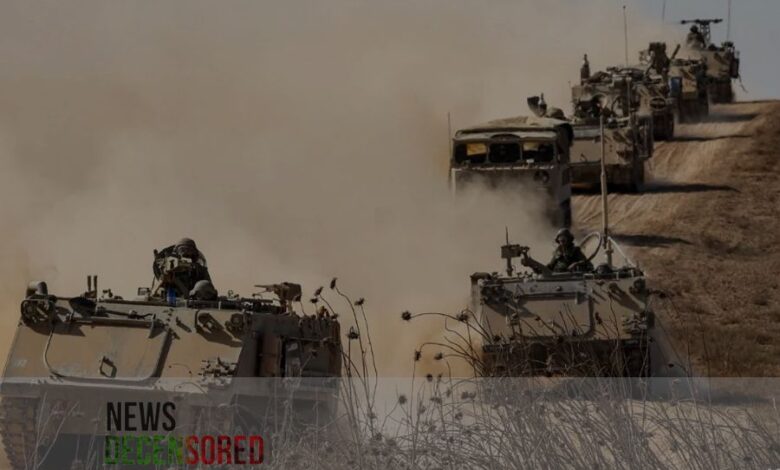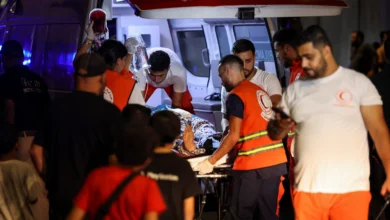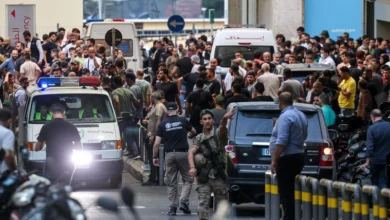After 200 days of war, Israel is failing militarily and heading towards a dead end

The Palestinian resistance factions led by the Al-Qassam Brigades, the military wing of the Islamic Resistance Movement Hamas, were able to kill more than 354 Israeli officers and soldiers and hundreds of settlers, and capture more than 140 others during the Al-Aqsa Flood Operation that occurred on the 7th of last October.
According to an information report by Arab media, it took Israel hours to recover from the shock, and over the course of two full days, its army tried to retake the areas surrounding the Gaza Strip that the resistance had entered, which is estimated at 650 square kilometres.
Unprecedented bombing
Warplanes began carrying out one of the largest bombing operations in their history across the Gaza Strip, committing dozens of massacres and striking dozens of facilities, housing, and infrastructure facilities indiscriminately.
After 3 weeks of unprecedented bombing, the occupation army began a ground incursion into the Strip, where vehicles entered without haste from the northern and northeastern regions, and the Gaza and North Gaza governorates were targets of the first phase.
Hit-and-run operations continued between the Israeli army and the resistance factions in the areas of the incursion, and after two months, the Israelis were able to reach the Shifa Medical Complex in western Gaza after killing every person they encountered on their way.
However, the Israeli army suffered heavy losses among officers and soldiers during these two months, as the resistance focused on bombing tunnels and fighting from a distance, but the “Al-Yassin-105” missile was the main target of this stage.
Head to Khan Yunis
The army began withdrawing from the northern Gaza Strip after separating it from the centre, and began exterminating about 700,000 residents, killing and starving them, after they refused to leave their homes towards the south.
With the withdrawal of its forces from the north, the Israeli army began a massive attack on Khan Yunis in the south, claiming the presence of a Hamas stronghold and Israeli prisoners there.
After 4 months of bloody confrontations in Khan Yunis, the Israeli army lost dozens of soldiers and officers without freeing a single prisoner or attacking a resistance leader.
A few hours after the Al-Zana ambush, which claimed the lives of 9 soldiers, coinciding with the killing of 5 others west of the city, the army withdrew from Khan Yunis to begin focused operations on the Nuseirat camp in the central Gaza Strip.
The army also failed to penetrate the Gaza Valley area towards the south, so the area remained without a large Israeli incursion, and it failed to achieve any of its goals in Gaza or Khan Yunis, after 200 years of fighting.
With the unleashing of killing in Gaza, most of the population fled towards Rafah in the south, which now houses more than 1,200,000 civilians, representing more than half of the population of the Strip.
The occupation continues to threaten to enter Rafah, but it faces widespread international opposition and a failed military experiment in various areas of the Strip, as entering the city means the start of a new series of horrific massacres.
Huge losses
During the war, 605 Israeli army soldiers were killed and more than 5,000 others were injured, and the occupation was able to recover only 120 prisoners through an exchange deal with the resistance as part of a humanitarian truce that lasted a week.
After 200 days of bombing and killing, the Israeli army tried to position itself in the eastern region of the Gaza Strip to separate it from the centre and the south, prevent the displaced from returning, and establish a buffer zone 500 metres deep from the separation fence inside the Gaza Strip.
But this positioning will make the forces an easy target for the resistance, which continues to carry out strikes in areas from which the occupation did not expect them to come after the destruction it inflicted on them.
The buffer zone will also lead to the presence of Israeli forces inside the Strip, which makes it vulnerable to killing and sniping at the hands of the resistance.
The negotiations that have been ongoing for 5 months have not succeeded in reaching a new agreement on the exchange of prisoners between the two sides. The resistance is committed to stopping the war and withdrawing Israeli forces from the Gaza Strip.




